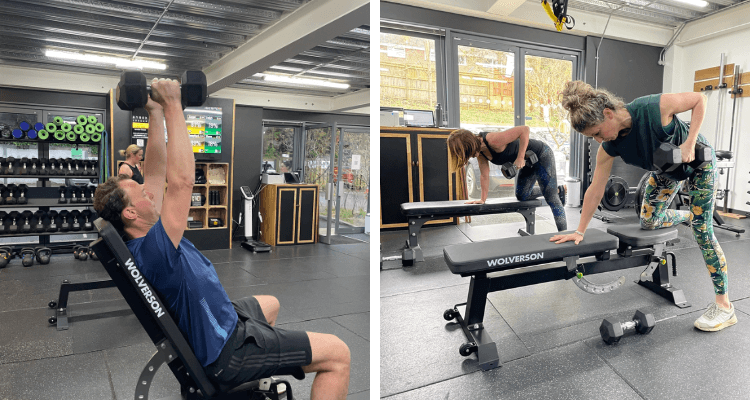

The secret sauce behind staying injury free & how to progress your training optimally
*This information does not constitute medical advice.
One of the single most important factors to both staying injury free and ultimately in a position where you can continue to make progress in your training is, 'load management.'
In the context of someone who trains in the gym, load management is the practice of controlling the total weight lifted across a session or multiple sessions.
For athletes in their sport, this is all their sport and non-sport related stressors as a stimulus and how that applies to them as an individual.
In today's blog, we are going to keep it simple and focus around people who regularly attend the gym and how they can make better decisions around their training loads.
Gym goers can often be split into two camps.
Person A - training with very low intensity (read: not lifting heavy enough) or not training frequently enough.
Person B - training with very high intensity (read: lifting too heavy) or lifting too frequently.
In Person A, a minimal training effect is achieved and therefore minimal strength or fitness improvement occurs over the long term.
In Person B, a huge training effect is achieved and this could run the risk of that individual exceeding their bodies recovery capabilities and increasing their risk of injury overtime.
Coaches Pro Tip
We recommend all beginners or individuals getting back into regular training to intentionally go lighter in order to optimise lifting technique and practice new exercises.
Once the initial phase of learning and adaptation has occurred, we then want to gradually up the intensity (weight lifted) to drive further adaptation. As continuing to lift too light can eventually lead to a plateau.
Therefore, finding an optimal level of challenge is incredibly important when it comes to taking your training to the next level.
Which category are you in??
I am going to introduce three categories to help you better understand how to progress your training safely, specific to which group you are in. These categories are:
Importantly, you can be in more than one of these categories at any one time. I.e. you can be uninjured but under-recovered. So it is important to read all of the categories and then tailor it to your needs. ?
Of course, there is a lot of context and nuance with managing training load and so it is incredibly difficult for this blog to be definitive. Therefore my intention with this blog is for this to be a guide only and a framework to help you make better decisions.
Category 1 - Uninjured
Firstly, the uninjured gym goer. In this individual, we can use the “10% rule†as a guide to help us.
So what is the 10% rule??
The 10% rule is constraining training load increases to less than 10% per week. This is particularly popular in endurance sports such as running.
As an example, if you are a runner looking to run further, then a good rule of thumb is to increase your total weekly distance by no more than 10% per week.
I.e. If you run a total of 12km per week, then a rough guide would be to increase your total weekly distance by no more than 1.2km per week.
Coaches Pro Tip
Very large increases in training load (+30%) might increase your risk of injury. This is extremely individual and context specific though, so read on to find out more.
Now here is where it can get confusing for some.
Some individuals - such as beginners - can increase their training load much faster than 10% per week for short periods of time. They can also tolerate these progressions and stay injury free.
As an example, in the gym we have seen clients increase their deadlift from 20kg to 80kg within 12 weeks or less. This is a 25% increase in training load week on week which is massive!
The reason for this is that beginners are still working on improving their technique and increasing their stability when performing the specific exercise. Once they have built their foundation of skill, they can then just focus on lifting from A to B. The subsequent weight increases can be huge once this has been mastered.
It is important to note that once you have been training for longer than a few months, these increases will significantly slow down. But don't worry, this is totally normal.
The single greatest mindset to have when it comes to approaching all of your gym sessions is your best effort on the day.
This is simply giving it your best on the day based on how you are feeling on that specific day while also taking into consideration where you are in your training journey.
I.e. You just got back from a 2-week holiday with minimal gym training, then be kind to yourself and gradually ease yourself back in.
Another good rule of thumb for the uninjured athlete, is:?
Keep an eye out for our next blog - how to train when you are injured. And get in touch with us if you have any questions on any of the above. ?
- Coach Alex

If you would like to learn more, please leave your contact details and we will be in contact.
Contact Us